Of all the things that surprised me at OXO headquarters, the Tiffany box had to be at the top of the list.
The kitchenware company’s head engineer, Mack Mor, had dug through the archives to find some product prototypes to help me understand how OXO designs and develops gadgets. Now, sitting on a table in the employee break room, amid jury-rigged cherry pitters and spiralizers constructed from sawed-apart water bottles, was a large, baby blue Tiffany box, of the sort in which you might expect to see encased a sparkling wedding present. Mor opened the box—and revealed the company’s very first salad spinner.
OXO revolutionized the salad spinner, to be sure. But to see this humble prototype—Frankenstein’d out of a child’s toy top and some hand-carved plastic, dull with age—swaddled inside a gorgeous Tiffany box made me laugh. OXO, with its embrace of dutiful, functional design and every-cook utility, certainly wasn’t Tiffany. Right?
Maybe not, but don’t tell that to the people who love OXO. The people who love OXO really love OXO.
If you’ve ever stocked a first apartment’s kitchen, or searched the internet for the perfect measuring cup, or asked a friend “Why is your ice-cream scoop better than mine?,” you know OXO. Founded in 1990, it was the brainchild of a housewares mogul who was inspired to create a new kind of product (legend has it) by the struggles of his arthritic wife to peel an apple. OXO brought universal design into the mainstream: Its products were meant to be welcoming, accessible, and easy to use for customers of differing abilities and confidence levels. And it’s succeeded, without ever substantially changing its iconic look—so iconic that the company’s initial vegetable peeler, with its “Good Grips” handle, is now in the permanent collection of the Museum of Modern Art.
The broad appeal is easy to understand. The near-fanatical devotion the company inspires three decades later is a little harder. These days, OXO—pronounced “ox-oh,” not “oh-ex-oh”—is the No. 1 kitchen gadget company in market share, according to market research firm the NPD Group. OXO is so dominant in the kitchen-gadget space that the consumer-recommendation site Wirecutter features a blog post simply listing the 42 OXO products that top its various category rankings. OXO rules America’s Test Kitchen picks, too, to the point it makes readers suspicious ATK is in cahoots with the brand. (“They don’t have any say!” a top editor there insisted to me.) Nearly 150,000 people follow OXO on Instagram, where the company’s not-particularly-exciting photos of neatly organized pantries full of OXO Pop storage containers garner comments like “They keep food so fresh and look amazing!” Its products also inspire fierce devotion among chefs and culinary experts. “I’m absolutely obsessed,” declared Helen Rosner, the New Yorker magazine food writer.
But come on: Can any kitchen gadget, or gadget company, really be that much better than the others? I peered into that Tiffany box to find out.
If you’re a fan of OXO, the very mention of the Good Grips handle has likely sent you into a Proustian reverie. Even if you’ve only occasionally used the company’s products, you can almost certainly imagine holding one right now. That gentle squish in your hand! Those snazzy thin rubber fins underneath your index finger and thumb!
The story of OXO’s dominance in kitchen gadgetry begins with that Good Grips handle. “I think that handle is overlooked,” said Lisa McManus, an executive editor at America’s Test Kitchen as well as its gadget critic. “Other companies simply don’t make products that are that comfortable to use, for people with a range of abilities. They bring along people who aren’t comfortable with kitchen tools.”
“I got a phone call around 7 at night,” recalled designer Davin Stowell. It was 1989, and at the other end of the line was the serial entrepreneur Sam Farber, who had recently retired from running the housewares company Copco. “It was about 1 in the morning where he was, but he couldn’t sleep.”
Farber was on vacation in France, where his wife, who suffered from arthritis, had spent the evening bemoaning the crappy metal vegetable peeler in their kitchen. Farber challenged Stowell’s firm, Smart Design, to make a line of kitchen tools that could be used by anyone, including people with limited hand strength. (Stowell goes into greater detail about the origins of OXO here. Update, June 24, 2022: The writer and disability design advocate Liz Jackson makes a great case that the story is more complex, and that viewing Farber’s wife, Betsey, as the “inspiration” for the Good Grips handle rather than one of its creators does her a disservice.)
The resulting soft rubber handle has evolved over the decades, becoming more streamlined and a tiny bit less unstylish. But it remains accessible, affordable, and playful, like all OXO’s products. It subtly guides your fingers to the right position. It gives when you squeeze. It’s the root from which OXO’s philosophy grows.
A handle, of course, is not the only thing that makes a gadget work. Everyone I talked to at OXO took pains to point out that in many ways the tool head is more important. (Stowell likes to say that the peeler was so sharp—OXO found a Japanese company that once made samurai swords to manufacture the blade—that he could have attached a stick to it and it would still have worked.) If the grip represents the company’s initial triumph, the many, many tool heads it has developed over decades represent the company’s commitment to making things that really work.
As an example, Rosner, the New Yorker writer, pointed to the company’s garlic press. “It’s the best garlic press on the market,” she said, “because it’s so fucking heavy.” The press is die-cast steel, hefty, with two Good Grips handles slipped over the ends of the steel levers. “It’s a tool that understands the physics of pressing!” Rosner continued. “It’s like fourth grade science class, when you learn about simple machines. The inclined plane, the pulley, and the OXO garlic press.”
That garlic press, like every OXO product, is an OXO creation from top to bottom. Unlike many brand-name kitchen gadget companies, Wirecutter senior editor Marguerite Preston told me, OXO doesn’t just buy someone else’s gadget and put its name on it: “They’re a company that designs every product that they sell.”
OXO positively dominates Wirecutter, the New York Times–owned recommendations platform that published the “enumerated love letter” to its products. Preston explained that its ethos of universal design—making products that most people can use—dovetails with Wirecutter’s editorial mission, finding “the best for most people.”
Ditto America’s Test Kitchen, devoted to maximum durability and practicality for home cooks. “They thought of a lot of things,” Lisa McManus said. “They’ve obviously used the products and figured out what the pain points are and figured out how to solve them.”
Rosner practically yelled through the phone: “When does a company ever make products that are thoughtful and better and more affordable? It’s like the dream of capitalism!”
Such encomia—for spatulas and garlic presses! What is OXO’s secret?
The building on Manhattan’s far West Side that houses OXO is so big that trains used to run through it, and for decades it included an elevator big enough to transport an entire truck. Now, on one floor of that mammoth former freight terminal, about 150 OXO executives, engineers, and salespeople occupy an office that is quite a bit sleeker and flashier than the typical OXO product, sporting beautiful production studios and meeting rooms named after designers like Noguchi and Eames. One striking wall features dozens of gloves, hanging in a grid to symbolize the many hands that make and use OXO products.
It was in OXO’s company kitchen—a break room that often doubles as a product testing space—that I was ceremonially handed that Tiffany box containing the company’s prototype salad spinner, first fabricated in 1997.
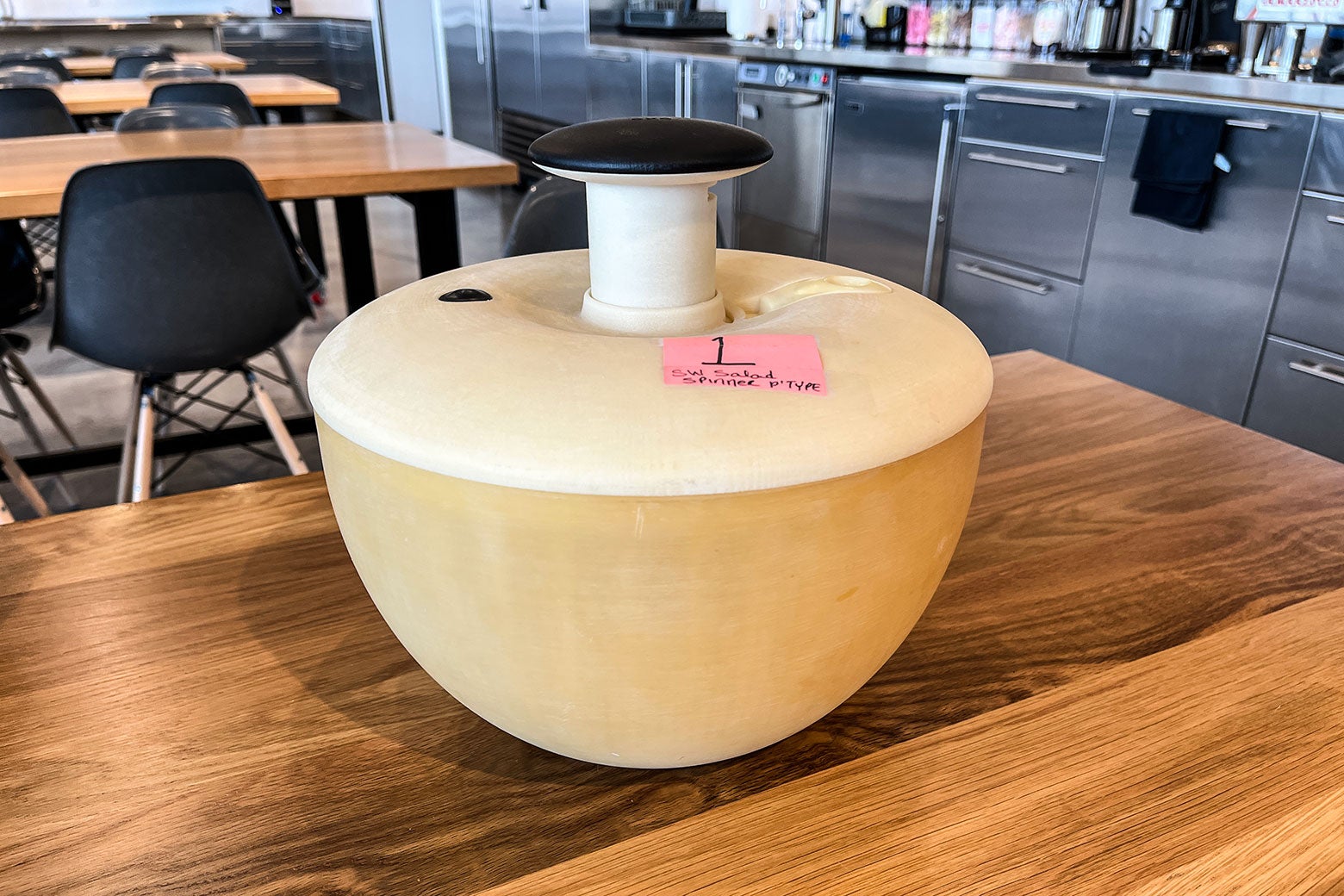
It is hard to overstate the extent to which OXO transformed salad spinners. “They practically invented the category,” said America’s Test Kitchen’s McManus. And it’s true that once upon a time, if you wanted to spin a salad, you had to use both hands. These were the dark ages and we do not like to speak of them, but from 1974–98, if you were one of the few home cooks who owned a salad spinner to clean and dry your greens, your spinner likely featured a crank, or a starter cord.
“It was like starting an outboard motor,” McManus said. “The cords get gunky, they don’t retract. You have to hold the thing down with your other hand.”
I likely don’t have to tell you what OXO’s innovation was: a plunger that when pushed down with one hand sends the basket full of greens whirring around. The device was simpler, more elegant, a little masterpiece of practical design. “It solved a common problem people had in the kitchen,” McManus said, “just like that.”
The idea for the plunger came from a children’s toy, one of those metal tops that spins around when you push down its plunger. And you can feel, when using the spinner, those origins in your interaction with the device. “It’s fun!” McManus said when I talked to her. “On some level, it’s extremely satisfying to push that thing down and make it spin.”
“There’s a real spirit of play and discovery” to OXO’s innovations, Rosner agreed. “It’s like what you hear about 3M in the old days: ‘Huh, what if I stick this to that?’ ”
I lifted the spinner prototype out of the Tiffany box, on which someone had handwritten, “ORIGINAL SALAD SPINNER PROTO DO NOT THROW OUT!” Its lead screw, liberated from the child’s spinning top that inspired its designer, still works, sending the basket merrily whirring in its plastic bowl. In the days of the spinner prototype, engineers hand-carved plastic parts or paid specialized workshops to machine them. These days, the process is simpler: A sextet of 3D printers next to the OXO office bathrooms allows engineers to quickly generate components, making for quicker and more precise design.
Mack Mor, the head engineer, is an affable mix of bro and dork, with a backward baseball cap and a predilection for enthusiastic monologues about physical principles. He showed me the prototype’s push-button brake, another OXO innovation. “There was a big problem with it squeaking,” he said. In the first few versions of the spinner, the brake was a round nub, like a pencil eraser. “It would really vibrate when it ran into the ring,” Mor said. Years into the life of the spinner, one of OXO’s most popular products, a designer brought in a bicycle brake, which angled slightly in toward the direction of the spin. The innovation, added in the spinner’s fourth iteration, launched in 2016.
This willingness to tinker with even a successful product to make it better is one of the qualities OXO values the most, according to Michael Delevante, the company’s vice president of product development. “We go back,” he said. “We question everything. We might be lucky enough to have a product that does well for decades, but if we learn something new, we’ll go back and take another look at it.”
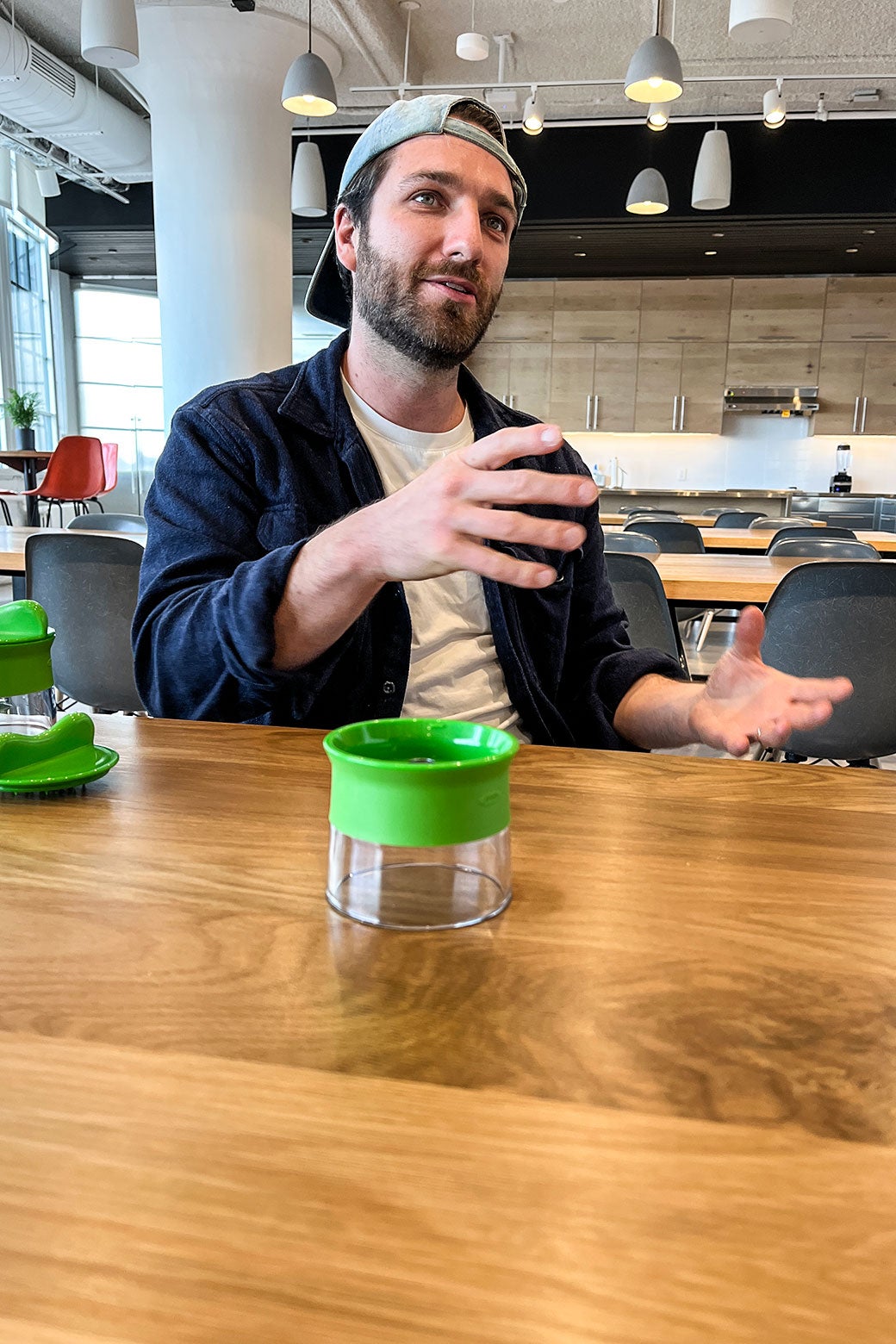
When I heard this, I thought, Well, surely this isn’t that unusual. But Lisa McManus, too, pointed to this aspect of OXO’s culture as crucial. “They’re not just putting stuff out there and letting it lie,” she said. She even noted that when a new OXO product gets poor reviews—it happens!—the company will often issue a speedy redesign, seemingly in response to the review.
Down on the mezzanine level of its giant warehouse building, OXO maintains a torture chamber for kitchenware, a workshop to fulfill the company’s need for incessant product testing. The room is filled with handmade cycle-testing rigs: soldered-together robots, run off Raspberry Pis, that endlessly push and prod and spin OXO products to see what it takes to make them break. The robot that tests salad spinners, for example, pushes down the plunger 200,000 times. “Sometimes,” Mor said, “you can’t make a robot to test something, so you just have to bring in temps for a week to, like, open wine bottles.”
But the engineering team is also hungry for real-world, real-kitchen experience, which means commandeering whomever you can find around the office, handing them a product, and instructing them to take it home and give it a try. “Being an OXO employee means owning a lot of half-finished kitchen gadgets in the wrong color,” Mor said. “A lot of them almost work.”
In the summer of 2020, it was those in-home tests that identified a problem with OXO’s newest salad spinner, a large, heavy glass bowl meant as an upmarket alternative to the company’s plastic models. Glass bowls made by the same factory might vary in size by several millimeters, unlike plastic bowls, which are essentially uniform. The result, Mor found, was that the types of lids they’d used on their plastic spinners didn’t always quite fit snugly on the new glass bowls.
“We had already tooled up the lid,” he said, absently pushing the spinner’s button and watching it whir. “But when we did at-home testing with real lettuce, the load would become off-balance, and the lid would rattle like crazy!” As he spoke, Mor threw his hands in the air, pantomiming the frustration of a perfectionist faced with sudden evidence of imperfection.
After a few weeks of tinkering, Mor hit on a gasket—a rubber ring around the lid, keeping it stable on the bowl—as a possible solution. But the product was meant to be sent off to production, and changing the lid would cause a substantial delay. “I had to make a video to convince everyone of the problem,” he said. “A rattle-y lid versus a stable one.”
In the video, the spinner does indeed shake and rattle alarmingly when something heavy is placed on one side of the basket. Then Mor replaces the old lid with his thrown-together new lid and its hastily added rubber gasket. When he pushes down the plunger, the rattling is gone.
In consumer products, it’s not rare to delay a new product, but it is expensive. Your sales team has already made those pitches; stores are counting on the products; you’re spending more money and pushing further into the future the time when you’ll actually see any revenue. But after watching Mor’s video, OXO executives agreed to a delay to implement the new solution. The new specs went out to the factory in China. “It ended up being about four months,” Mor said.
“It left salad season and went into December,” the company’s publicist added mournfully.
“But they let me do it,” Mor said in triumph. I asked how many products missed deadlines because OXO engineers were still tinkering with details they wanted to make better. “Honestly,” he said with a grin, “most of them.”
Very well. I’d become convinced that, due to the efforts of OXO’s unusual in-house engineering process and its never-stop-tinkering culture, OXO products generally work better than those from other companies. Maybe the salad-spinning, potato-peeling army was onto something.
But one point still nagged at me as I thought about OXO’s office, with its Eames and Noguchi conference rooms. As I’ve gotten older, I’ve noticed that I’ve become less likely to buy an OXO gadget, no matter what Wirecutter says. My cabinets and drawers still feature my old standbys—the spinner, the peeler, the only mandoline I’ve ever used that I’m not terrified will instantly cut off my fingers—but sometimes when I’m shopping for something new, I’m drawn to more elegant, beautiful products, because the OXO option seems just a little bit … plain.
All those chunky black-and-white gadgets, lined up on hooks: Suddenly I’m flashing back to budget-conscious Bed Bath & Beyond trips with my post-college roommates. “The design aesthetic is very ’90s,” Wirecutter’s Preston said—adding, politely, “kind of middlebrow.” OXO may be “affordable and ubiquitous,” as ATK’s McManus put it, but those same qualities that make OXO great also make the brand seem a little bit basic. You could never imagine it making, for better or for worse, an Instagram pan.
To die-hard OXOnians, that doesn’t matter. “It’s not important to me that my tools look pretty,” Rosner said. “It’s important that they work well and they don’t hurt to use.” Even so, Preston agreed that some OXO products suffered for their dowdiness: “Some of their things are very functional, but not very attractive. The one that comes up on our team is their pie server. It works very well. Does it look great on your Thanksgiving table? I don’t know.”
Davin Stowell, whose Smart Design firm still works with OXO on new products, said the brand’s ’90s vibe is merely a response to the brand’s ’90s success. “It became quite iconic in the 1990s,” he pointed out. “It became the symbol of universal design.” He takes issue with knocking OXO for valuing function over beauty. “When I started in design school, everyone wanted to make things that would end up in design stores, or the Museum of Modern Art. I’d much rather design a product that millions of people buy and appreciate than make a product that nobody can afford, and half the people can’t understand it because it’s got some artistic vision in it.”
And anyway, Stowell did make things that ended up in MoMA. “Design is more than beauty,” he said. “It’s about the entire experience, about how you use the object. We’re not going to make anything ugly.” He paused. “Well, maybe we’ve made a few ugly things. But we’re working on it.”
I asked OXO’s Delevante, the VP of product development, if he thought the company’s design was “middlebrow.” “Well, I think of it as high-end,” he said, in a meeting room named for Le Corbusier. “High-end design for everyone, in the service of making things better.” A Tiffany box, one might say, enclosing a very plain but effective salad spinner.
Visiting a friend’s house recently, I noticed she owned the new OXO glass salad spinner, the one Mack Mor delayed to make better with a gasketed lid. This friend is quite design-conscious—her kitchen features beautiful and fancy cookware, dishes, and fixtures. I was a little surprised to see this perfectly nice but somewhat, you know, normie product in this wonderfully Instagrammable kitchen.
I later texted her to ask why she had a salad spinner from OXO, rather than from a more “designy” company. “OXO is a designy company,” she wrote back. “I’m a fan because I’m a design buff. Design in the true sense. How it works—not how it looks.”
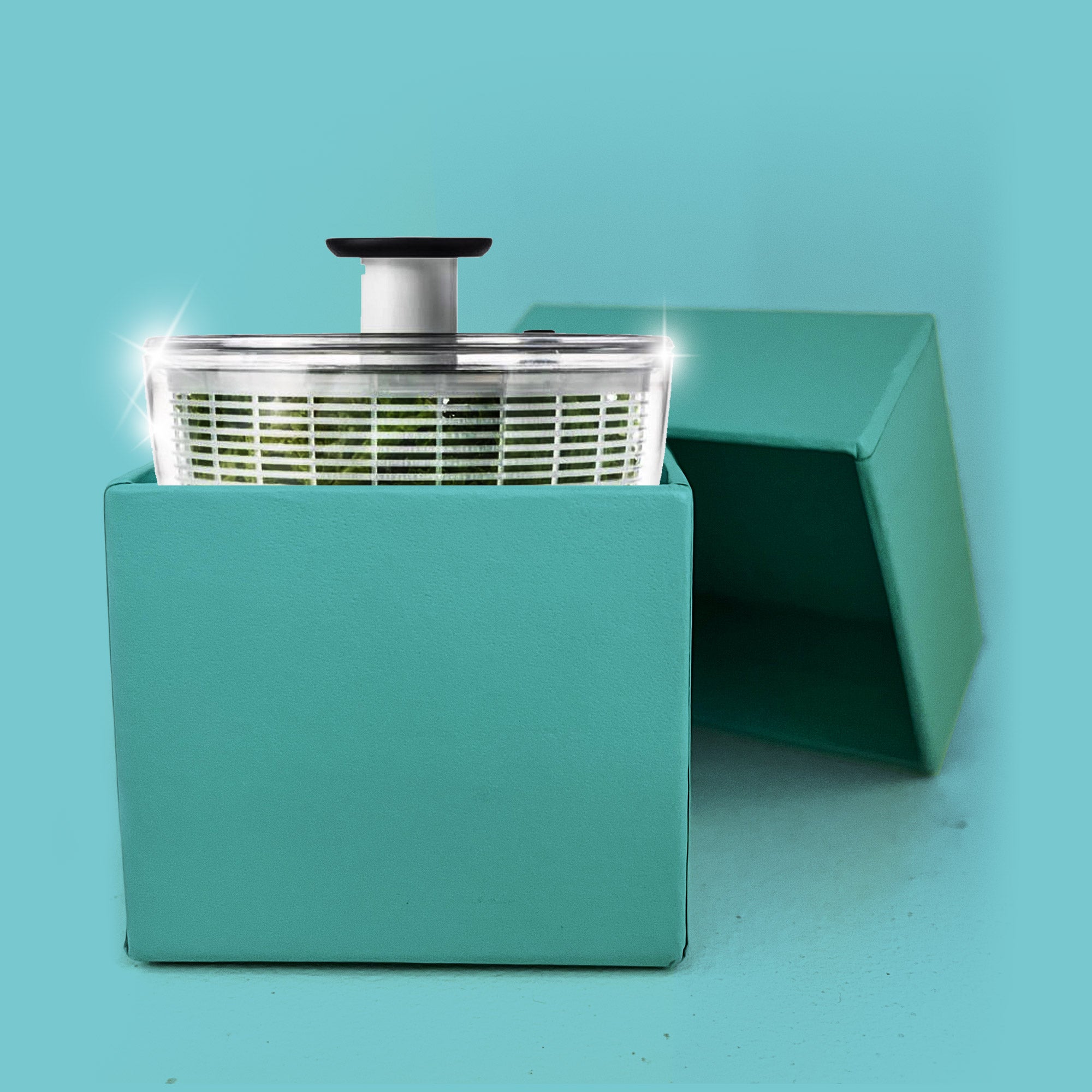
 f
f
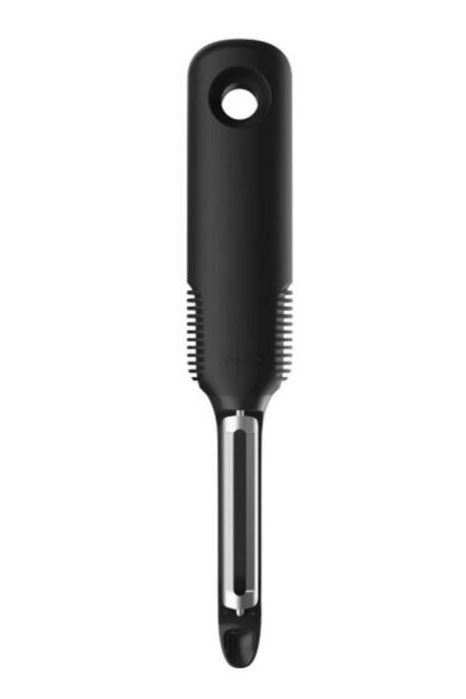 f
f
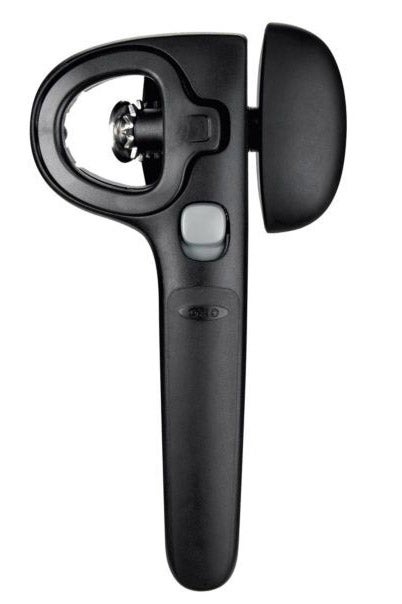 he
he
 ery
ery